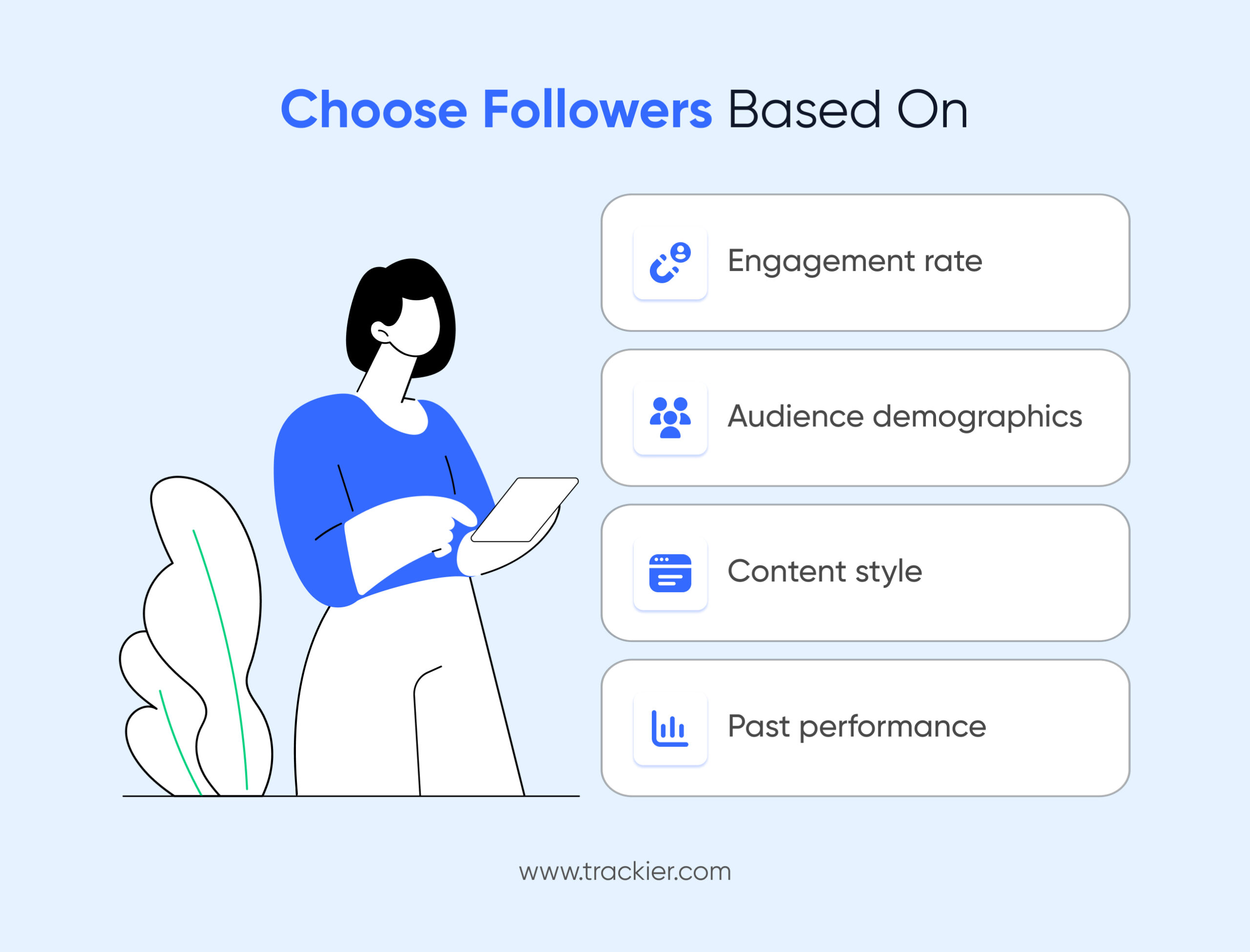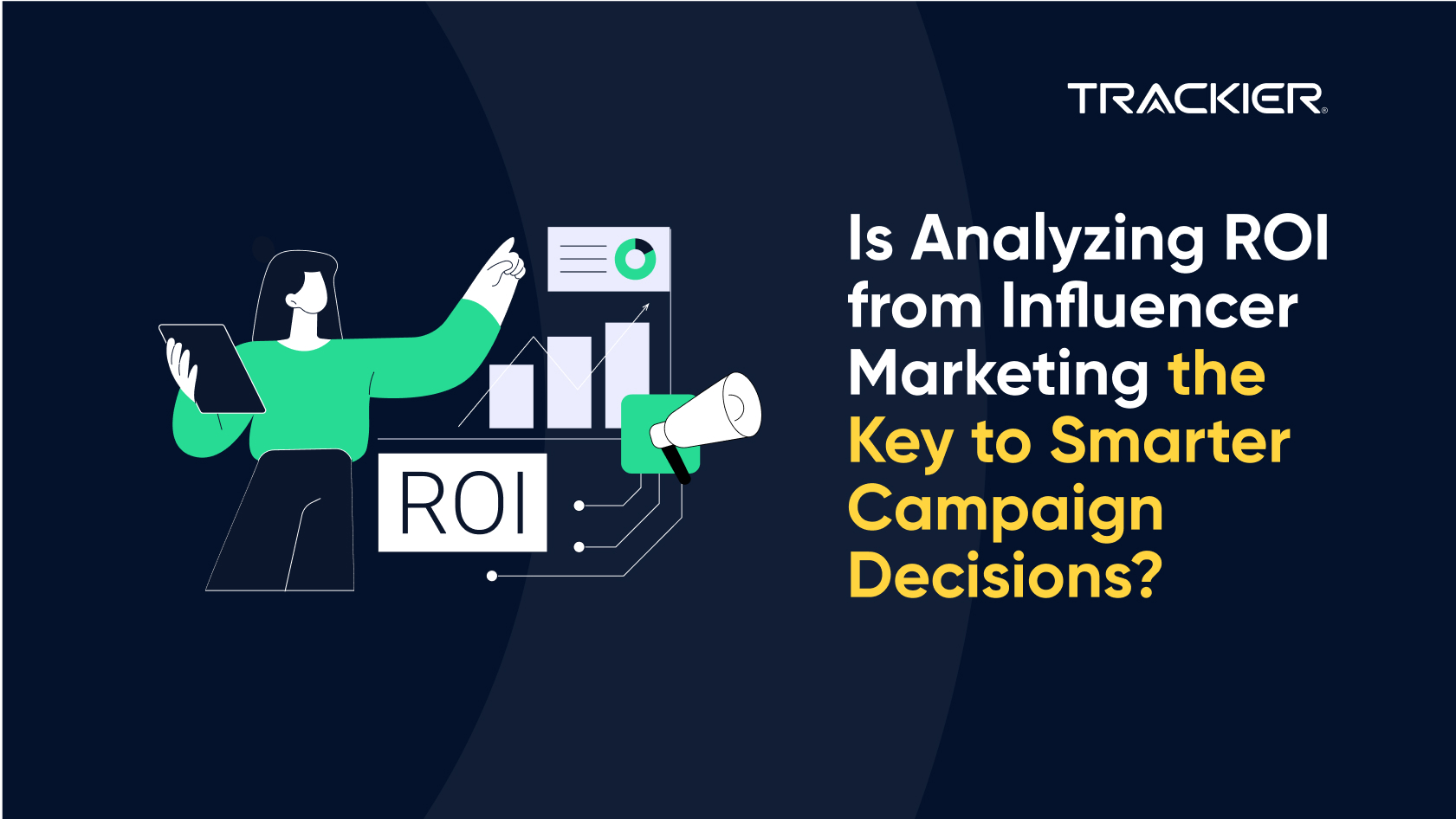Influencer marketing is not just a trend, it is a smart way for brands to grow, boost sales, and increase brand awareness. But to get the best results, it should be implemented in the right way.
Also, define your goal, which could be driving traffic, boosting sales, etc, for optimizing influencer marketing strategies for better ROI.
As per the report, influencer partnerships deliver $5.78 ROI for every $1 spent. That is why it is necessary to leverage a performance marketing software like Trackier for campaign management, track performance in real-time, and scale effortlessly.
1. Set Clear Goals Before Launching Each Campaign
Before launching any influencer marketing campaign, define your specific objectives, whether generating a sale or users have to sign up for a program. Without defining any clear goals, it becomes impossible to measure any results and know if the campaign was successful or not.
Objectives can be:
- Increasing brand awareness
- Boost engagement
- Increase sales
- Boost website traffic
After defining a goal, choose the right influencer marketing metrics. For instance, for the goal of increasing brand awareness, track the reach and impressions. If the goal is conversion, track website clicks and sales.
2. Collaborate With the Right Influencers

The biggest mistake brands make is that they choose the influencer based on their followers. Huge followers do not ensure that the audience will be engaging. Instead of choosing influencers based on their followers, look at:
- Engagement rate
- Audience demographics
- Content style
- Past performance
3. Build Stronger Relationships With Influencers
Influencers should feel they are working with your brand as a partner. If your audience feels they are being valued, and trusted, hence they will put more effort to create the best content that naturally engaging with your targeted audience.
Few ways to build strong relationships with your influencers:
- Give them creative freedom
- Communicate clearly
- Engage with their content
- Pay them timely and fairly
Building strong relationships is more important, as this will bring better results, their content will become more authentic, and the audience will interact more.
4. Keep Campaigns Organized and Scalable
Managing some few campaigns is easily manageable, but what if you have to manage hundred or thousands of campaigns? That is where you have to leverage a performance marketing software to manage all of your campaigns on one platform.
The main part of optimizing your influencer marketing tactics is making sure that the campaigns are aligned properly, so that they allow for smooth execution, easy tracking, and comprehensive reporting.
5. Use Data to Make Smarter Decisions
Just imagining the data is not the correct way to run any influencer marketing campaigns. You should make the decision based on comprehensive data that helps you track performance and adjust your campaigns accordingly.
6. Campaign Should Be Focused on ROI
Every campaign should be focused on getting ROI. If any campaigns are not getting any results, like sales or traffic, there is no point in running campaigns.
Tracking influencer marketing campaigns is necessary to get a clear picture of every campaign. Track KPIs like CTR, conversion that will help you to optimize your campaigns for better results.
7. Track Emerging Influencer Marketing Trends
Influencer marketing is constantly changing. Some changes involve new platforms, audience behaviors, content style, and many more. Every marketer and brand needs to be updated to follow these influencer marketing trends.
Some of the biggest changes that the industry is facing right now are:
- Short-form video platforms are rising like TikTok and Instagram reels.
- There is an increasing demand for real and unfiltered content instead of traditional advertising.
- Higher engagement rate from nano and micro-influencers compared to big celebrities.
- Some AI-powered tools make the influencer selection and campaign tracking more effective.
Following these trends helps brands, marketers, and agencies define effective strategies for influencer marketing and create campaigns that really resonate with the audience.
8. Measure and Deliver a Comprehensive Report
At last, the campaign would not be successful without proving that it gets the ROI. Brands need to see the real results, and the main point would be how you are presenting these insights.
Aim for a clear and well-organized campaign reporting to build trust and ensure that you are delivering the ROI.
Also, instead of putting numbers into the spreadsheet, focus on:
- How do you get the results?
- What are the strategies that you have leveraged?
- Tools that help you get the ROI
- Influencers who contribute to the sales.
By explaining these points, the brands will be convinced that you are the right person to run these campaigns and are able to get the ROI.
Conclusion
In conclusion, influencer marketing is not just about finding the influencer with lots of followers. It is about building long-lasting relationships, using comprehensive data, and staying ahead of trends. To maximize your ROI, your campaigns should be structured, scalable, and insight-driven.
To ensure campaign efficiency, leverage a performance marketing software like Trackier to prevent fraud, right attribution of the partners, and real-time analytics.
The influencer marketing industry is continuously evolving, so brands and marketers should have a solid strategy and the right tools so that their campaigns not only reach their target audience but also convert.



